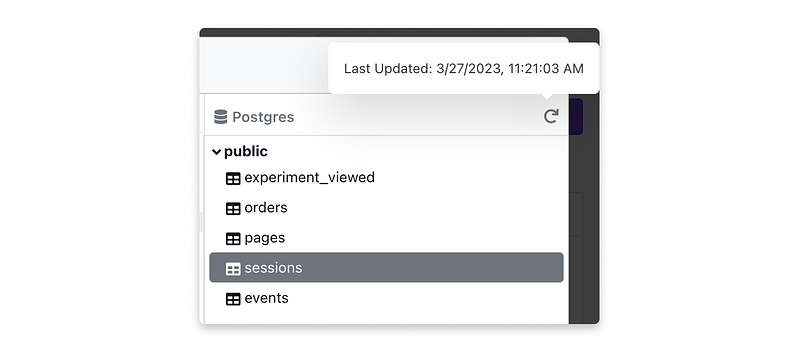This is the second day of feature announcements for our upcoming GrowthBook 2.0 release. Today we’re focusing on changes related to data and statistics.
CUPED (Variance Reduction) for Faster Experimentation

Waiting to collect enough data can be a significant roadblock in increasing experimentation velocity. CUPED, a form of variance reduction, is one of the simplest and most effective ways to remove those roadblocks and get answers faster. For example, Microsoft estimates that using CUPED was equivalent to getting 20% or more traffic for the majority of metrics used by one of their product teams.
CUPED is now available in the Frequentist engine in GrowthBook 2.0. Read more about it on our engineering blog.
Improved SQL Editing Experience

Getting your metric queries exactly right can require a lot of switching between your database environment and GrowthBook. With the schema browser, you can now browse the database schemas directly from GrowthBook, making adding exposure and metric queries easier to build. Read more about this feature on our engineering blog : https://blog.growthbook.io/introducing-the-growthbook-schema-browser
Faster SQL and Simpler Configuration
GrowthBook 2.0 can execute SQL queries up to 2X as fast as before. By introducing a new attribution model and using other internal optimizations, median query runtime is uniformly better across test queries, and up to twice as fast for certain configurations.
Furthermore, the new “Experiment Duration” attribution model makes it easier to analyze metrics from experiment exposure until the end of the experiment, rather than requiring arbitrarily large conversion windows. The following figure shows the two Attribution Models you can select from in GrowthBook 2.0.

You can read more about the faster SQL queries on our engineering blog.
Databricks Integration

Growth Book now natively supports Databricks as a data source for experiment data. Simply add a new data source, choose the event tracker you use, then select “Databricks” and add your connection details. (This is the 14th data connector for GrowthBook — let us know if you have a request for any more!)






